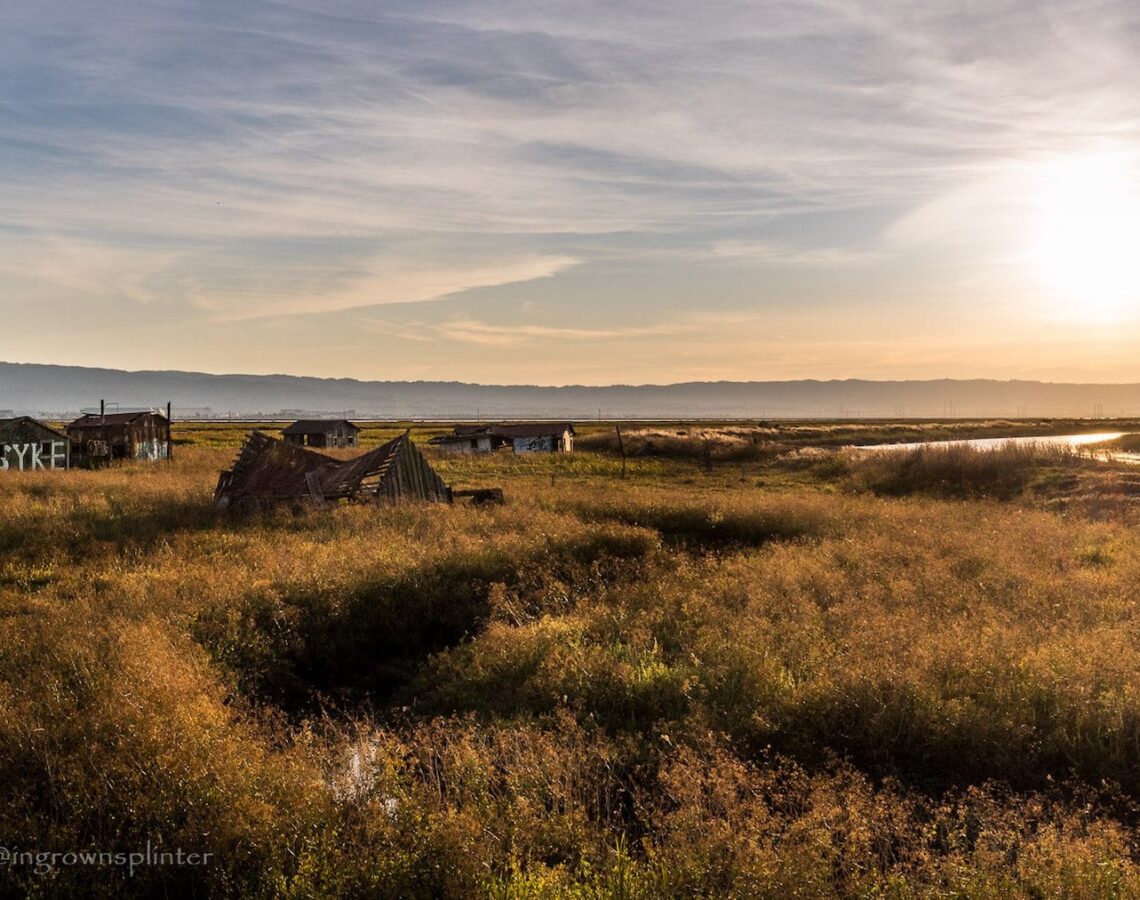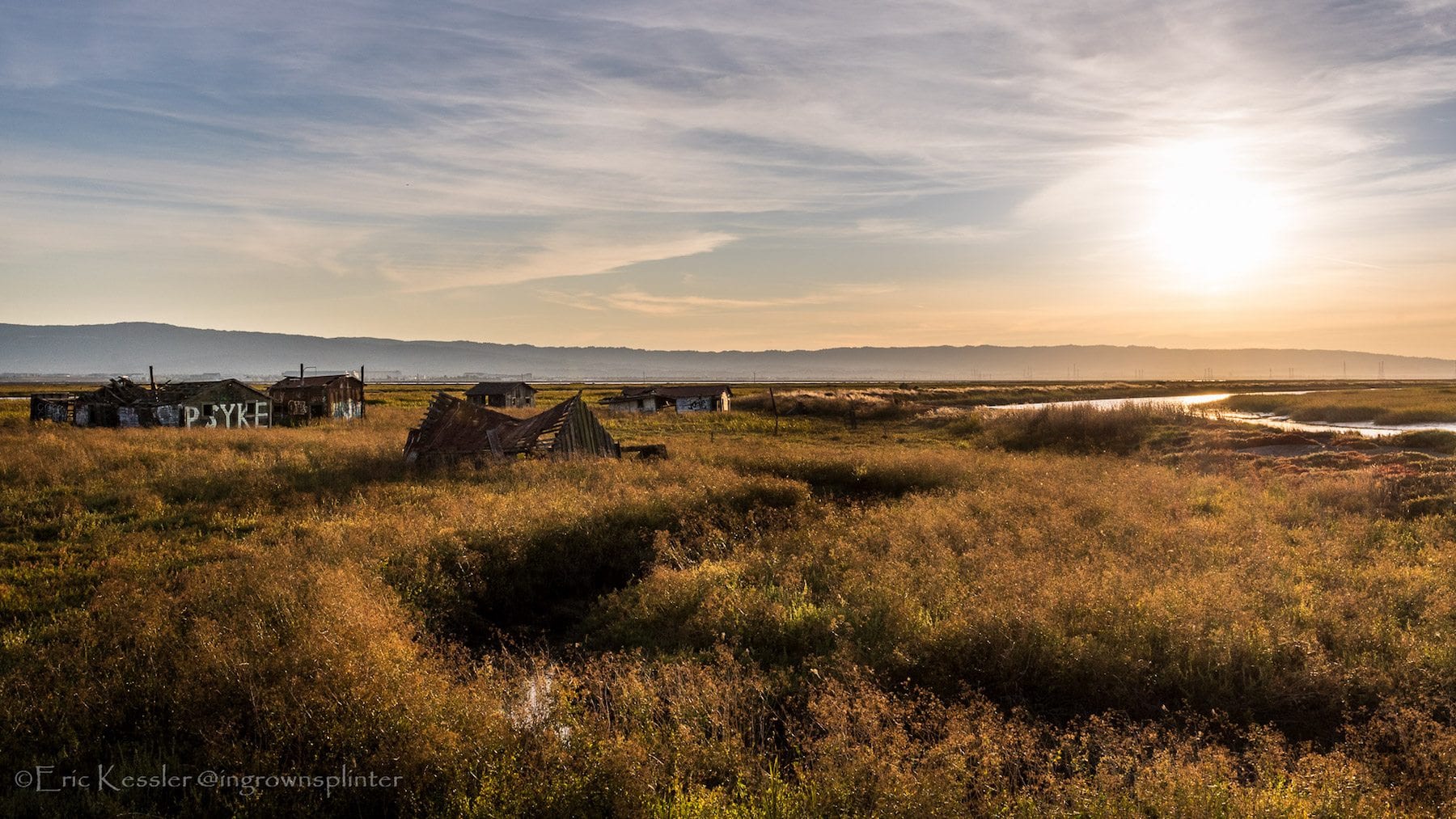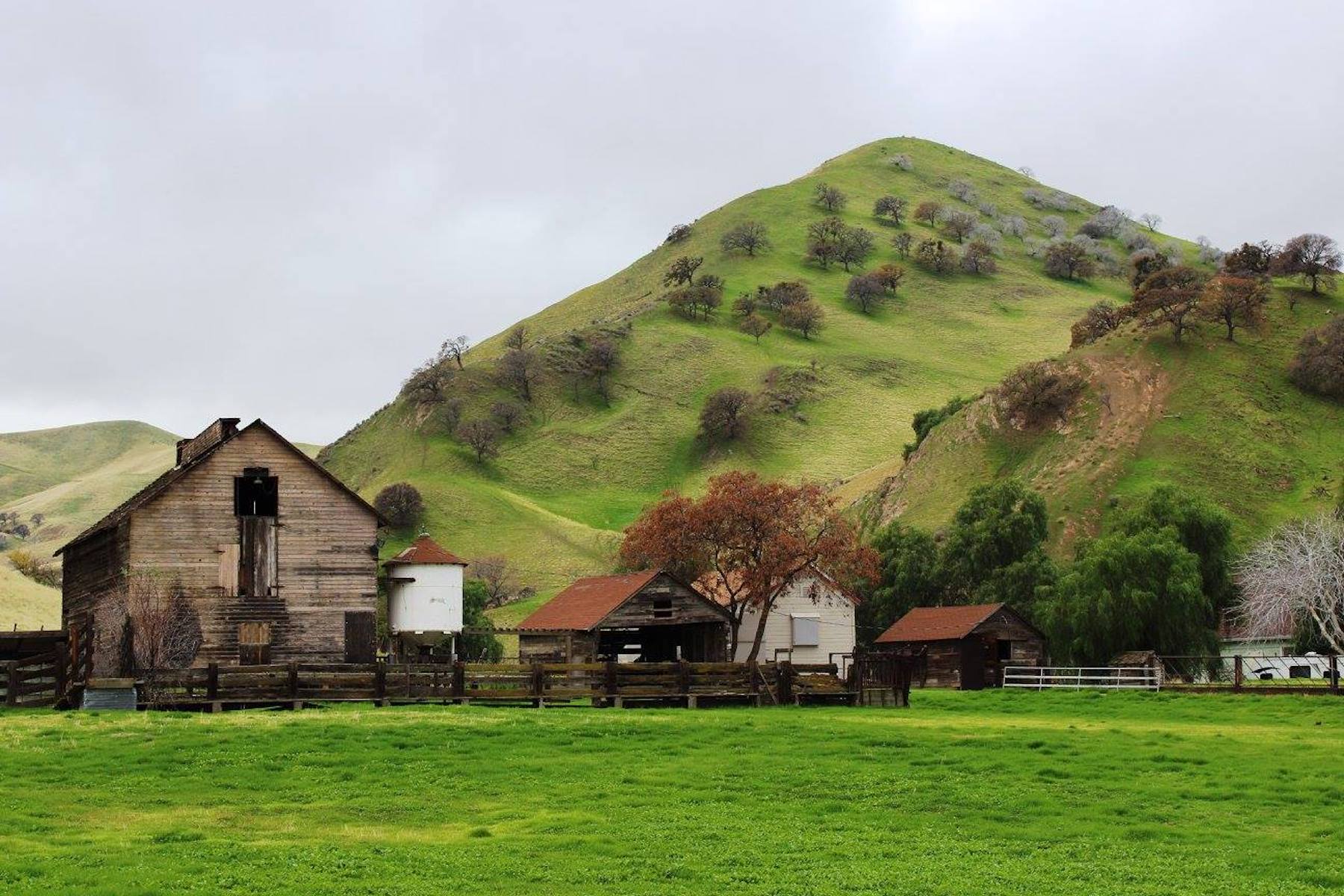The 7 Most Haunted Ghost Towns in California

Why visit a haunted house when you can visit a haunted town?
California has one of the largest number of ghost towns in the United States, thanks in part to the California Gold Rush. Between 1848-1855, thousands of hopeful prospectors from all around the world flocked to the Golden State, ravaging the land for precious minerals, looking to get-rich-quick. Some got lucky and struck gold. Some went home empty handed. But the misfortunate would perish, never to return.
From floods, fires, to shoot outs, the Wild West was no place for the light hearted. If you’re looking for a REAL fright-fest this Halloween, leave your jack-o-lanterns and cotton ball cobwebs behind, hit the highway, and pay a visit to the 7 most haunted ghost towns in California.
Related: The 10 Most Haunted Places in San Francisco

1. Drawbridge, CA
Founded in 1876 by the narrow-gauge South Pacific Coast Railroad, Drawbridge is closed to the public, making it the Bay Area’s only true ghost town. The town started off with a solitary cabin, occupied by the operator for the railroad’s two drawbridges spanning the Mud Creek and Coyote Creek Sloughs. As train passengers discovered the marshland’s large population of ducks, an influx of hunters began visiting the small town. By 1920, Drawbridge would eventually grow from a single cabin to 90 buildings which included stores, hotels, brothels, saloons, and homes, attracting up to 1,000 visitors every weekend. Due to the town’s remote location and lawlessness nature, Drawbridge was a popular destination for weekenders jonesing for a drink during times of prohibition. As South Bay began to industrialize in the early-mid 90’s, neighboring cities like San Jose started polluting the bay with industrial waste and raw sewage, ruining the marshes and consequently lead to the town’s demise in 1979.
2. Wingo, CA
Before the age of cars, and before the Golden Gate Bridge was built, there was a bustling commuter hub called Wingo located just South of Sonoma. Constructed in the 1800’s, this town was once a popular destination for duck hunters and fishermen who frequented Wingo by trains to embark on 3 hour ferry rides to and from San Francisco. Business in Wingo was truly booming until the completion of the Golden Gate Bridge 1937. As more and more people started using cars, ferry and train commuters slowly declined, and after the town was ravaged by fires and floods, Wingo eventually was forgotten. Today, though a few faithful residents still reside in a town nearby, the only visitors who visit are the freight trains that still roll by. So if you find yourself lost trying to get to Wingo, don’t even bother asking for directions, as you’re probably not welcome.

3. Black Diamond Mines Regional Preserve, CA
Just north of Mount Diablo in Contra Costa County, lies the Black Diamond Mines Regional Preserve, California’s largest coal mining site between 1850 and 1906. Within the preserve are the 5 ghost towns: Nortonville, Stewartville, West Hartley, Judsonville, and Somersville. Home to one of the largest surviving burial grounds of the Wild West, the Rose Hill Cemetery is where at least 235 people (mostly miners involved in mine accidents) have been laid to rest. The cemetery has experienced a great deal of vandalism since its abandonment. Due to the graveyard’s remote location, many headstones have been broken/stolen over the years by unwanted visitors who wander onto the grounds at night to party, and by livestock from local ranches, disturbing the spirits of the deceased. Today, it’s said that visitors who linger around the graveyard after dark can hear sounds laughter and crying echoing in the night.
4. North Bloomfield, CA
One of the last towns of the California Gold Rush, North Bloomfield was discovered by 3 lucky miners who stumbled upon a small deposit of gold on the San Juan Ridge in 1851. The trio went back into town with a pocket full of gold to restock on supplies, and were subsequently followed back to North Bloomfield by prospects with hopes of striking it rich. Hundreds of prospectors spent the next years futilely searching for profitable deposits of gold, until 1853 when the invention of hydraulic mining would change the way gold was mined forever. The town’s population would boom to 2,000 in the early 1880’s, and businesses were thriving. The gold mining business in North Bloomfield would prosper until 1884, when farmers of Sacramento Valley, weary of the constant flooding and water pollution caused by hydraulic mining, filed a lawsuit against the Bloomfield Mining and Gravel Company. Hydraulic mining was eventually declared illegal in Gold Country, signifying the death of North Bloomfield.

5. Bodie, CA
Located 75 miles southeast of Lake Tahoe is California’s Official State Gold Rush Ghost Town, Bodie, one of the best preserved ghost towns in the country. Bodie was discovered by Waterman S. Body (William Bodey) in 1859, but didn’t become the boom town we know of today until 1876, when the Standard Company discovered a promising deposit of gold. In its heyday, Bodie had 65 saloons, 4 fire stations, multiple newspaper publications, a Wells Fargo, Chinatown, red light district, jail house, cemetery, and was occupied by a staggering 10,000 residents. The epitome of a “Wild West” town, saloon brawls, robberies, and shootouts were a common occurrence. Business was good and the gold was flowing, but as new mines were discovered in Arizona, Utah, and Montana during the 1880’s, Bodie’s population slowly declined until the last of the remaining residents left town in 1943.
6. Panamint City, CA
The town of the “bad and wicked”. This lawless town was founded in 1873 after three bandits who were hiding out in the area discovered silver one year prior. By 1874, Panamint City was booming with 2,000 money hungry miners looking to get-rich-quick. Saloons were filled with drunk miners, brothels were popping up all across town, and with more than 50 shootings taking place the cemetery was ever expanding. But the fun was short lived, as by Fall of 1875, the major mines were depleted signifying the boom’s end. And after a flash flood ravaged most of the town in 1876, the fate of Panamint City was sealed.

7. Calico, CA
The site of the largest silver strike in California, Calico is California’s Official State Silver Rush Ghost Town. Founded in 1881 by four prospectors who discovered silver heading towards Calico Peaks. At its peak between 1883 and 1885, Calico had over 500 silver mines and a population of 1,200. The town was complete with a newspaper publication, post office, saloons, brothels, a school district, Wells Fargo, and it’s also where you’ll find Calico’s infamous Boot Hill (hyperlink the definition of “Boot Hill”) cemetery, the burial grounds of some of the most notorious local badmen. Calico would prosper until 1890, when the Sherman Silver Purchase Act was enacted, driving down the price of silver and eventually turning the town into the ghost town in 1907.
